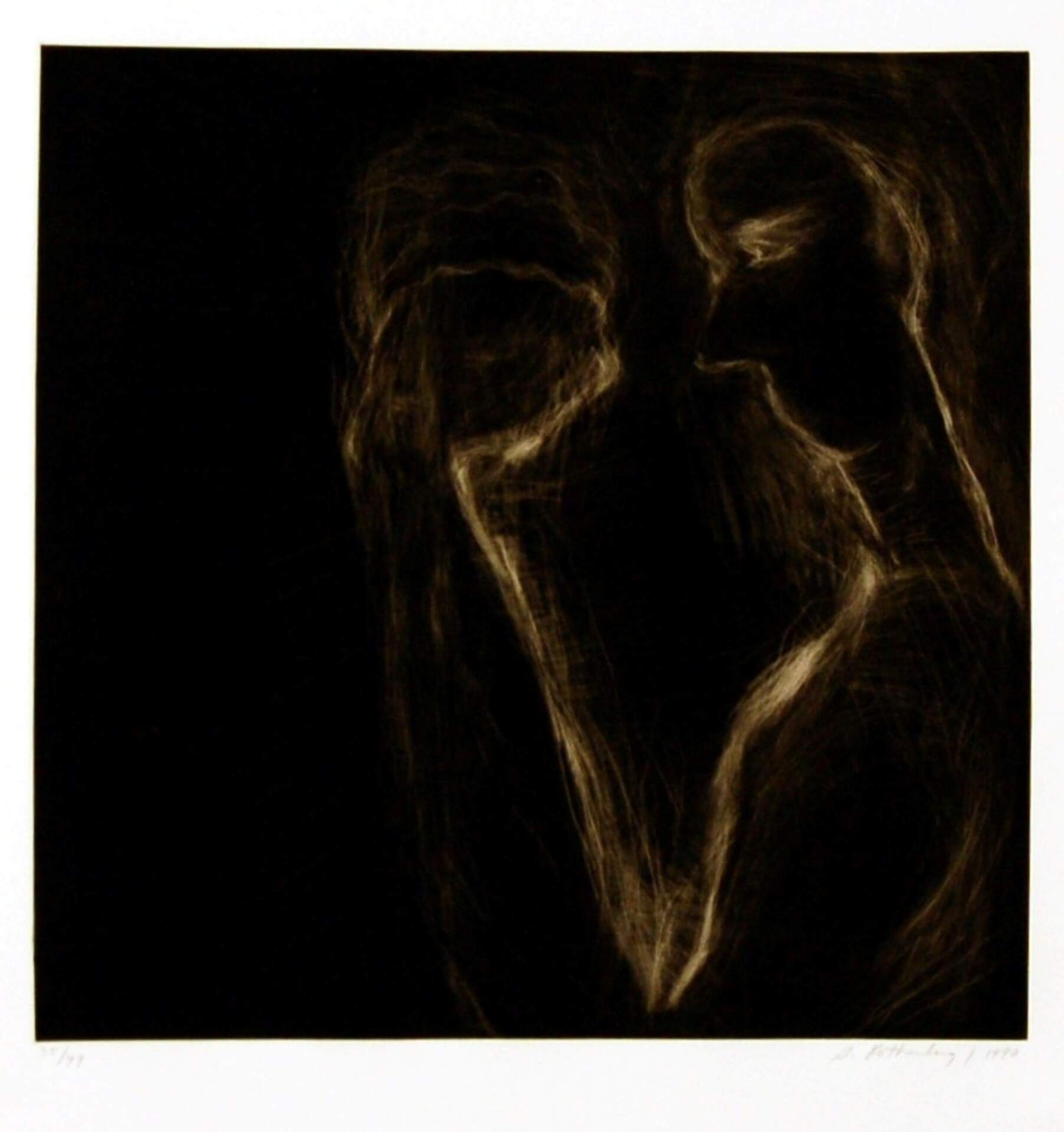Susan Rothenberg (1945-2020)Mezzo-Fist # 1
1990
Mezzotint and chine collé on paper, 35/49
19-7/16 x 19 ¼ inches, plate, 31 x 22 3/8 inches, sheet
Gift of Deborah Ronnen Fine Arts, 2006
In music, the term “mezzo forte” means “moderately loudly.” Applied to the title, Mezzo-Fist # 1, Susan Rothenberg may be implying a moderately forceful threat; however, considering the very dark palette of the print and the clenched, pumping fist that appears almost the same size of the man’s head, one might feel intimidated by the looming menace.
Rothenberg also appears to be punning on the primary method of producing this mezzotint print that produces modulated tones that mimic her painting style, allowing subject matter to emerge from an undefined, mysterious background space, which in this case is nightmarish. She used two printmaking methods to produce Mezzo-Fist # 1: mezzotint and chine collé. As defined by The Tate:
Mezzotint is an engraving technique developed in the seventeenth century which allows for the creation of prints with soft gradations of tone and rich and velvety blacks. The process involves indenting the metal printing plate by rocking a toothed metal tool across the surface. Each pit holds ink, and if printed at this stage the image would be solid black. However, the printmaker creates dark and light tones by gradually rubbing down or burnishing the rough surface to various degrees of smoothness to reduce the ink-holding capacity of areas of the plate. The technique became particularly popular in eighteenth-century England for reproducing portrait paintings.
The Museum of Modern Art defines chine collé as:
A technique, used in conjunction with printmaking processes such as etching or lithography, that results in a two-layered paper support: a tissue-thin paper, cut to the size of the printing plate, and a larger, thicker support paper below. Both the tissue and the support sheet are placed on top of the inked plate and run together through the printing press, sometimes with a thin layer of adhesive between them to reinforce the bond produced through the pressure of the press. The process creates a subtle, delicate backdrop to the printed image. Chine is the French word for China, referring to the fact that the thin paper originally used with this technique was imported from China. In addition to China, paper was also imported from India or Japan. Collé is the French word for "glued."
—Nancy Weekly
